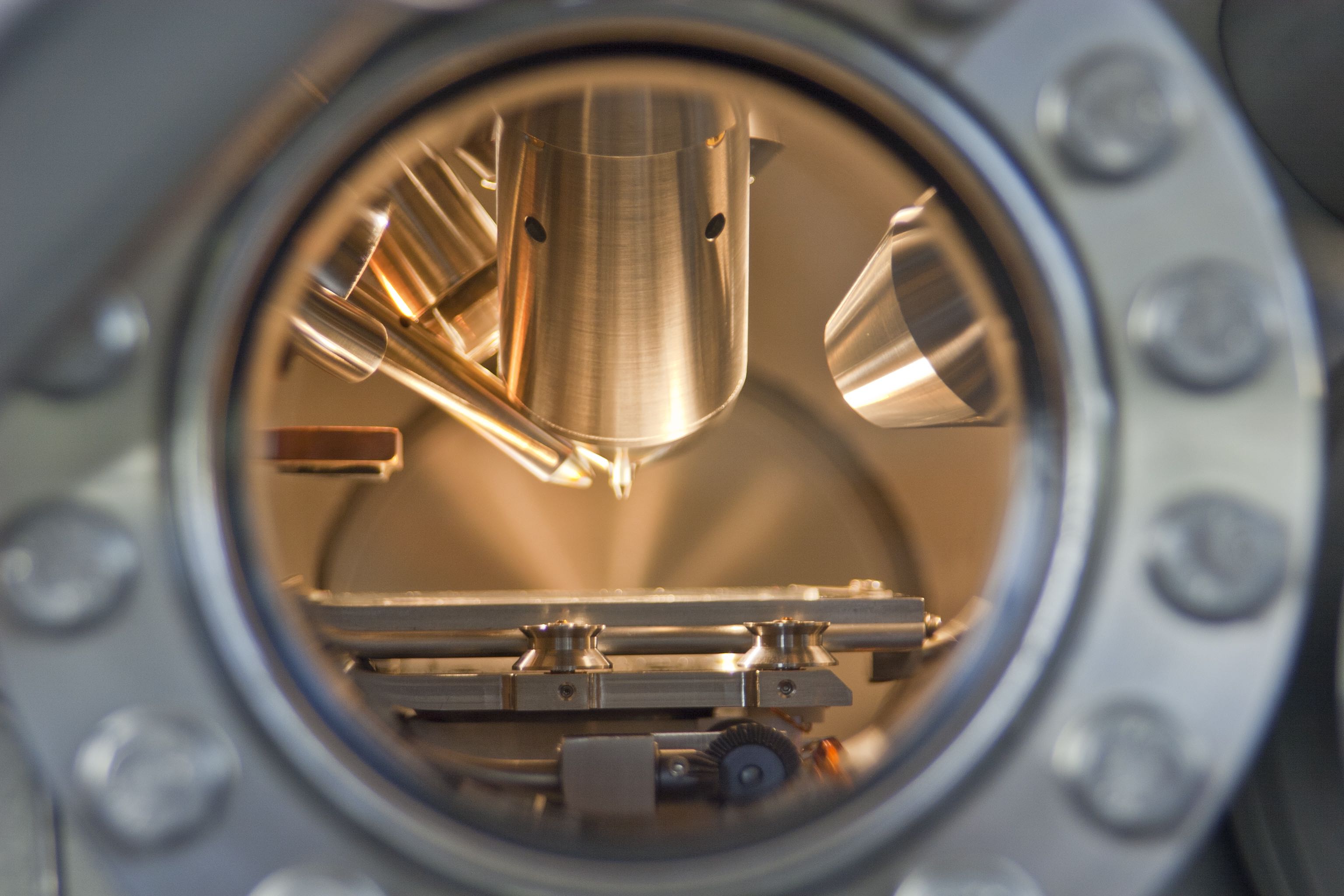Friday, 14 May 2021
A new method to analyse the blood thinning drug Heparin has been developed that can pinpoint contaminants more accurately and quickly, providing greater quality control and safety.
An interdisciplinary team from the University of Nottingham’s Schools of Pharmacy and Medicine have used the latest chemical imaging technology to identify contaminants in Heparin at the nanoscale, a discovery that manufacturers could use to improve the quality and safety of this widely used anticoagulant drug. The research has been published in Communications Chemistry.
Heparin is naturally occurring glycosaminoglycan (GAG) but is also widely used widely as a medication. It is often used as an anticoagulant (blood thinner) before and after surgery but is also used in kidney dialysis and in blood processing. Pharmaceutical-grade heparin is derived from mucosal tissues of pig intestines or cow lungs. The majority of Heparin is made in China and in 2008 there were a number of deaths and illnesses caused by a contaminated batch. Continuing problems with the supply chain remain a concern.
 Time of Flight Secondary Ion Mass Spectrometry (ToF-SIMS)
Time of Flight Secondary Ion Mass Spectrometry (ToF-SIMS)
Using a state-of-the-art chemical imaging technique called Time of Flight Secondary Ion Mass Spectrometry (ToF-SIMS) the researchers developed a new analytical approach that is more than 100 times more sensitive at detecting contaminants in Heparin, whilst also being faster and requiring less material to analyse. This technique blasts high-energy beams of positive ions at the sample’s surface to produces secondary ions. These ions are then accelerated into a time-of-flight analyser and where their mass can be measured. The spectrum of ions provides a detailed measurement of the sample’s chemical make-up.
Heparin is particularly susceptible to contamination, commonly from other glycosaminoglycans and as they are all very similar chemically it is difficult to tell them apart using traditional analysis techniques. Whilst there are safety measures in place already to prevent contamination we saw room for improvement and using the ToF-SIMS techniques we were able to create a faster and more sensitive method for analysing Heparin that can be achieved with a very small amount of sample material.
Professor of Stem Cell Glycobiology, Cathy Merry adds: “There are many real risks to the heparin supply chain, not least of which are the increasing prevalence of animal viruses. The previous heparin crisis was linked to a reduction in the supply of porcine heparin following an outbreak of swine flu. There is a real risk this will happen again and there is now even tighter control on the international trade in animals so it is even more likely that vast numbers of animals could be destroyed if there’s another outbreak. There’s also been a huge drive to create synthetic heparin and, although this is still a way off, when it is available there will still be a need for a rapid, sensitive comparative technique to characterise the drug heparin which this technique can provide.”
This new technique is scalable for commercial use with the ability to analyse large numbers of samples at a time.
Dr Hook continues: “It is critical that safety measures are as accurate and sensitive as possible. This technique will be a cost-effective way for manufacturers to take their safety and quality control to the next level. We are also looking at how this technique could be adapted to diagnose GAG based disorders that are typically difficult to diagnose like Hunter’s Syndrome.”
Story credits
More information is available from Dr Andrew Hook on Andrew.Hook@nottingham.ac.uk
Notes to editors:
About the University of Nottingham
Ranked 97 in the world and 17th in the UK by the QS World University Rankings, the University of Nottingham is a founding member of Russell Group of research-intensive universities. Studying at the University of Nottingham is a life-changing experience, and we pride ourselves on unlocking the potential of our students. We have a pioneering spirit, expressed in the vision of our founder Sir Jesse Boot, which has seen us lead the way in establishing campuses in China and Malaysia - part of a globally connected network of education, research and industrial engagement.
Nottingham was crowned Sports University of the Year by The Times and Sunday Times Good University Guide 2024 – the third time it has been given the honour since 2018 – and by the Daily Mail University Guide 2024.
The university is among the best universities in the UK for the strength of our research, positioned seventh for research power in the UK according to REF 2021. The birthplace of discoveries such as MRI and ibuprofen, our innovations transform lives and tackle global problems such as sustainable food supplies, ending modern slavery, developing greener transport, and reducing reliance on fossil fuels.
The university is a major employer and industry partner - locally and globally - and our graduates are the third most targeted by the UK's top employers, according to The Graduate Market in 2024 report by High Fliers Research.
We lead the Universities for Nottingham initiative, in partnership with Nottingham Trent University, a pioneering collaboration between the city’s two world-class institutions to improve levels of prosperity, opportunity, sustainability, health and wellbeing for residents in the city and region we are proud to call home.
More news…